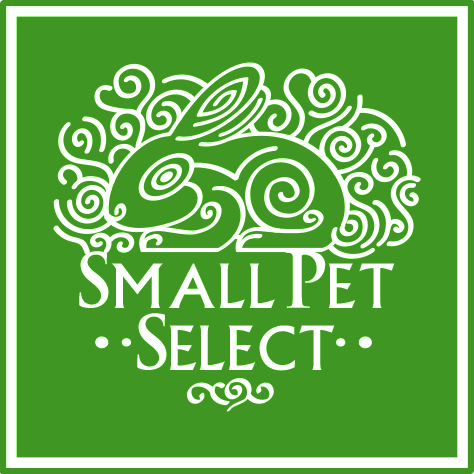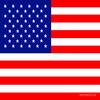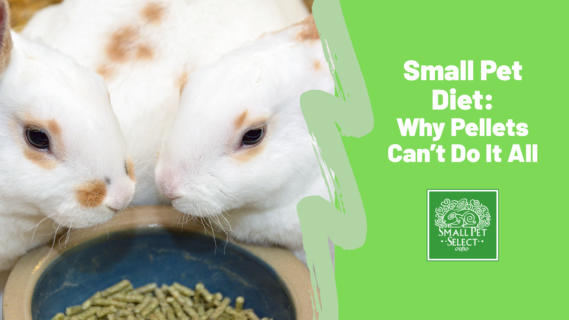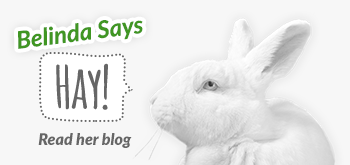When I first got a rabbit at age 19, I knew nothing. I took in a rabbit who someone didn’t want, and I didn’t think to find out anything about having one first. To be fair to myself, the internet wasn’t really around then, so information was harder to come by, but I didn’t even know rabbits needed hay!
Fortunately, nowadays there is a lot of information about what rabbits and other small pets need to survive and thrive. (Just make sure the source you’re getting information from is reliable.) And pellets alone, even good-quality pellets made by a reputable company and designed for your particular pet, are not enough. A complete diet includes hay and fresh veggies in addition to pellets and is necessary to help prevent disease and keep your pet healthy.
Gastrointestinal stasis
One of the most common health conditions small mammals, especially rabbits, can experience is gastrointestinal (GI) stasis. Some people refer to this as a pet having a hairball, but that’s really not what is going on (although often fur adds to the problem).
GI stasis is a condition in which the stomach and/or intestinal system is not moving along as it should. If your pet is experiencing GI stasis, you may notice it’s not eating as much, its poops are smaller, and its abdomen is firm instead of soft. This causes pain or discomfort for the pet, and because contents of the GI system become “stuck,” GI stasis is a life-threatening emergency.
Stress can lead to GI stasis because when a pet is not eating the GI system slows down. However, not enough fiber is what causes it. Fiber promotes intestinal movement, and small pets need to eat fiber, in the form of grass hay (Timothy hay, orchard grass, meadow grass), constantly in order to maintain this intestinal movement. Pellets do provide some fiber but not in the amount that is needed to keep pets’ GI systems moving the way they need to.
Dental disease
Another of the most common issues small pets experience is dental disease. Dental disease can affect any teeth, including the incisors (front teeth) or cheek teeth (pre-molars and molars). Small pets have teeth that continue to grow throughout their lives. Because of this, their teeth need to be worn down.
The main way this is accomplished is by eating hay. The back-and-forth chewing motion that happens when chomping on hay helps keep the incisors from overgrowing or growing in weird directions (think wooly mammoth tusks) and helps keep the pre-molars and molars from developing points (called “spurs”) on them that can cause painful ulcers on the tongue and cheek. Eating pellets doesn’t provide the chewing motions necessary.
Dental disease also includes issues such as dental infections such as tooth root abscesses and fractured teeth that are not often preventable, but at least if your pet has unlimited hay the risk of overgrowth and spurs is greatly diminished. Note that pets with genetic disorders involving the teeth may still have dental issues that need veterinary attention (for example, this is fairly common in lop-eared breeds).
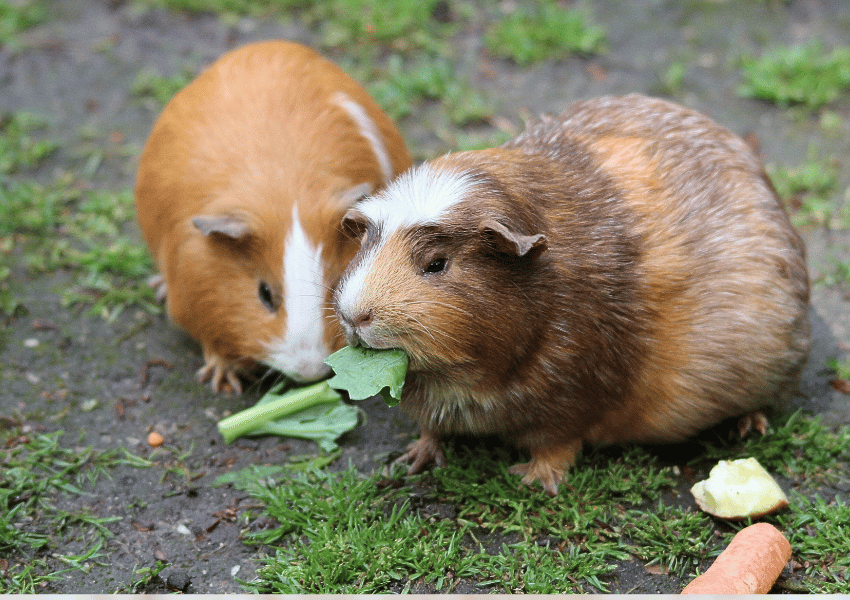
Obesity – which leads to even more problems
Another reason for pets to not eat just pellets is to help make sure they don’t become obese – or to help them lose weight if they already are. Just like with humans, obesity can lead to a lot of health problems. It can strain the heart and lungs, make any arthritis worse and more painful, lead to infected sores on the feet (pododermatitis) because of increased weight placed on the feet, lead to mineral deposits (called “sludge”) in the bladder, and predispose to infections.
In addition, pets can’t clean themselves as well as they should when they are overweight. This can lead to urine scald, which is when urine gets on the skin and causes irritation and inflammation. When pets are obese, urine comes into contact with excess fat, and when pets can’t clean themselves, the urine stays on the skin and “scalds” it. This can be very painful, especially if infection sets in.
As pets get older, their metabolism can slow down, meaning that pets are more likely to become overweight. Feeding fewer pellets as pets age is something a lot of veterinarians will recommend to help combat this.
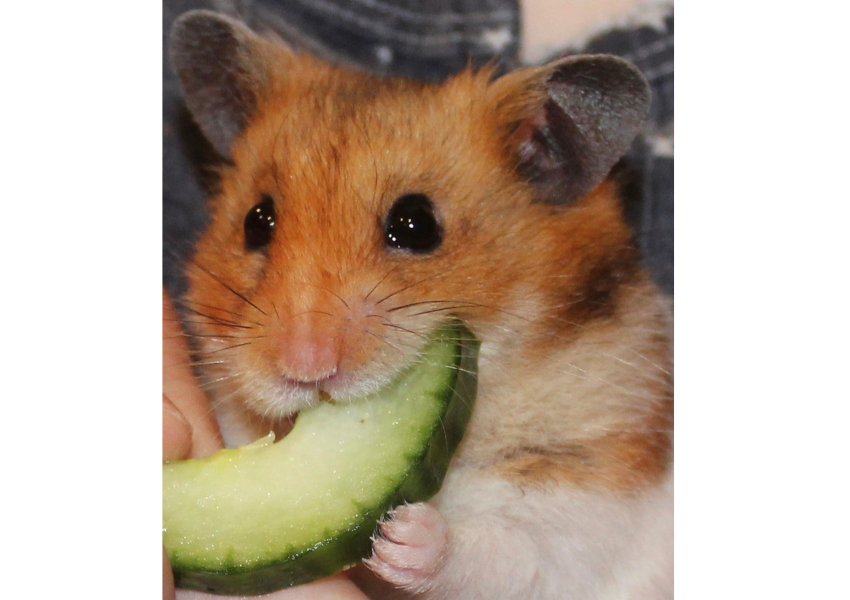
Eat your veggies!
We’ve talked about the importance of grass hay; now for the importance of fresh veggies, especially leafy greens!
Fresh veggies provide vitamins, minerals, and antioxidants that are necessary for vital bodily processes such as keeping the heart beating and muscles moving. These nutrients are also necessary for the overall good health of small pets. For example, leafy greens such as green leaf and red leaf lettuces, dandelion greens, kale, cilantro, and parsley contain vitamin C, which is important for pets but especially for Guinea pigs, whose bodies can’t make their own vitamin C. Pellets do contain a certain amount of vitamin C, but veggies are needed to supplement to ensure piggies get enough.
In addition, fresh veggies provide water to help hydrate pets; plus, pets love them! Just make sure that you are feeding the correct amount of veggies for your type of pet (usually around 10% of a pet’s diet) and that a certain type of veggie is okay before you feed it. (For example, spinach can give Guinea pigs and some rabbits really soft stools, and more than just a handful of any veggies can cause bloat in chinchillas).
Pellets as enrichment treats
A great way to use pellets and make sure your pet has fun eating them is to feed them as part of enrichment activities. Enrichment encourages foraging, playing, exercising, and using their minds.
Some examples include the following:
Fill empty toilet paper rolls with hay and some pellets
Hide pellets under the sections of egg cartons
Create holes in a small plastic container that your pet has to move or throw in order to have pellets come out
Place pellets in paper and crumple the paper up into balls
Place pellets into pre-made “snuffle mats”
Instead of using a bowl for pellets, spread them around your pet’s enclosure
Sprinkle a few pellets around your pet’s exercise area.
Use your imagination to come up with more great ideas!
Copyright 2025 Amy “Brem” Bremers, DVM
